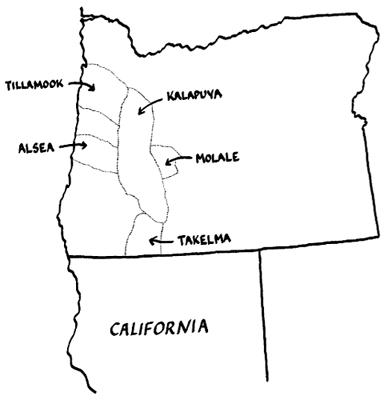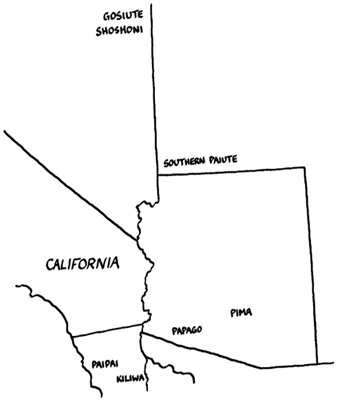| Linguistic areas |    |
In many parts of the world, extended contact among speakers of different languages has led to the development of similar structures independent of genetic relations. The languages may be related to one another, but as a group those in a linguistic area (or Sprachbund "language union") show special properties not attributable to common inheritance. This can there be an issue in determining whether languages are truly related.
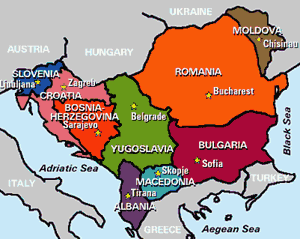 A
famous example is the Balkan
linguistic area, mainly including such languages as Bulgarian,
Macedonian, Albanian, and Romanian as well as (less centrally)
Greek, Serbo-Croatian, and Romani (Gypsy). Most of these languages
are from distinct branches of Indo-European, and their relatives
outside this area (especially the other Slavic and Romance languages)
fail to show the Balkan characteristics.
A
famous example is the Balkan
linguistic area, mainly including such languages as Bulgarian,
Macedonian, Albanian, and Romanian as well as (less centrally)
Greek, Serbo-Croatian, and Romani (Gypsy). Most of these languages
are from distinct branches of Indo-European, and their relatives
outside this area (especially the other Slavic and Romance languages)
fail to show the Balkan characteristics.
We'll look at a few examples of Balkan linguistic characteristics (Balkanisms), especially in syntax, before examining similar phenomena in the Americas.
See a more complex map of ethnic groups (often defined by language) in the Balkans, found at this site.
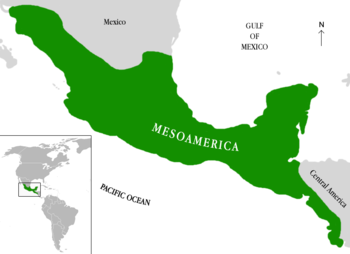

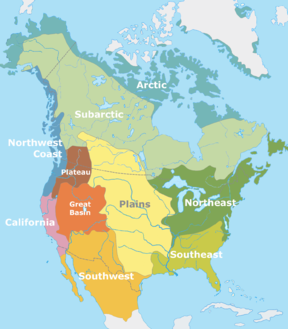
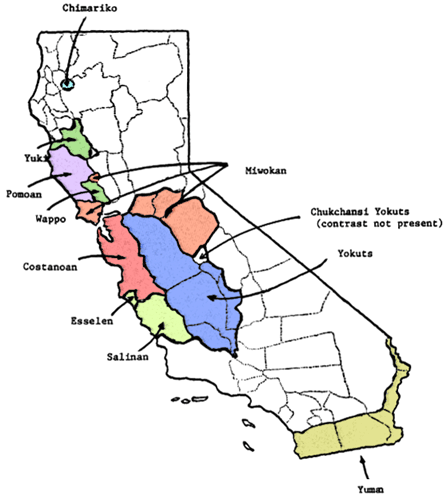 A
contrast in place of articulation between dental /t/ and alveolar
/ṭ/ is common in California but hard to find elsewhere in North
America. (It is common, however, in South Asia and Australia.) The contrast occurs in otherwise unrelated languages —
shown in the map — indicating a case of areal diffusion. In addition,
some languages include the affricate /c̣/ in contrast with just
/t/ or both /t, ṭ/.
A
contrast in place of articulation between dental /t/ and alveolar
/ṭ/ is common in California but hard to find elsewhere in North
America. (It is common, however, in South Asia and Australia.) The contrast occurs in otherwise unrelated languages —
shown in the map — indicating a case of areal diffusion. In addition,
some languages include the affricate /c̣/ in contrast with just
/t/ or both /t, ṭ/.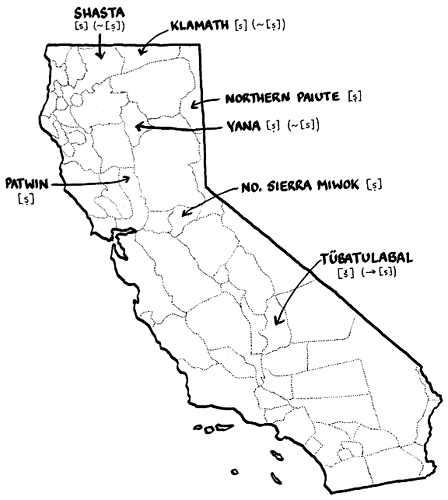 Among
these languages, the usual realization of the sibilant is not [s],
but rather most often [ṣ]; the retracted articulation may be a
possible alternant even when [s] is present and more common.
Among
these languages, the usual realization of the sibilant is not [s],
but rather most often [ṣ]; the retracted articulation may be a
possible alternant even when [s] is present and more common. 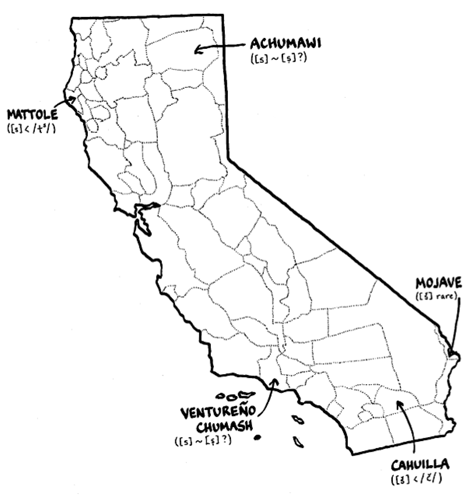 In
a few languages, non-retracted /s/ contrasts with /š/, similar
to the situation in many European languages.
In
a few languages, non-retracted /s/ contrasts with /š/, similar
to the situation in many European languages.  But
considerably more languages contrast retracted
/ṣ/ with /š/. It has been suggested that this is less common around
the world because these sounds are more similar acoustically, yet
it is common in this region.
But
considerably more languages contrast retracted
/ṣ/ with /š/. It has been suggested that this is less common around
the world because these sounds are more similar acoustically, yet
it is common in this region.  Finally,
the two kinds of /s/ constrast directly in a number of the languages
— the most common pattern of all. In some cases one of these sounds
alternates noncontrastively with another fricative, such as [š]
or [θ].
Finally,
the two kinds of /s/ constrast directly in a number of the languages
— the most common pattern of all. In some cases one of these sounds
alternates noncontrastively with another fricative, such as [š]
or [θ]. 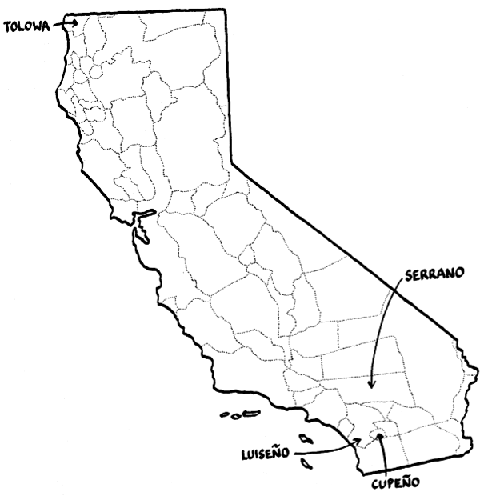 A
few languages go so far as to contrast all three sibilants /s,
ṣ, š/, but you can see that this is not common.
A
few languages go so far as to contrast all three sibilants /s,
ṣ, š/, but you can see that this is not common. 